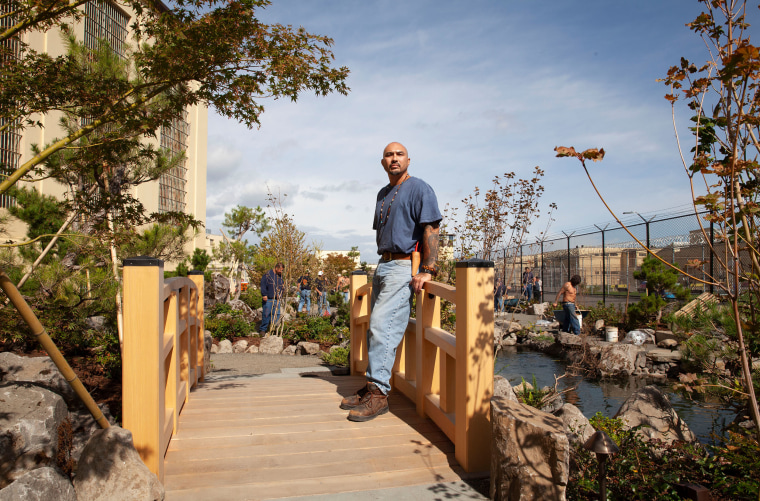SALEM, Oregon — Johnny Cofer was contemplative as he stood in the prison yard of the Oregon State Penitentiary, lightly grasping a cluster of pine needles growing from a tree recently planted at the correctional facility.
“The day the trees came in, I hadn’t touched a tree in almost 20 years,” Cofer said. “The experience was very emotional to say the least.”
Cofer, 46, has spent almost half his life in incarceration. He is nearly two decades into his two concurrent life sentences — received for two separate murders he committed during a period of his life associated with drugs. When asked to describe what life is like living inside the state’s only maximum-security prison, Cofer was direct in his assessment.
“When you’re put in an environment where everything is concrete and steel and is designed specifically to contain and secure you, it can be a very dehumanizing experience,” he said.
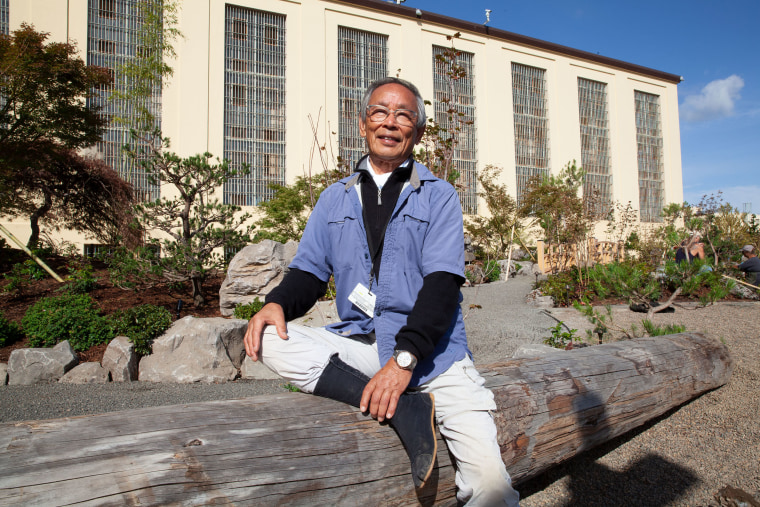
But Cofer said things are currently changing at the Oregon State Penitentiary, and the catalyst for that change is a single Japanese garden five years in the making. Cofer and other advocates of the garden are hopeful its creation can help spur a cultural shift not only at the penitentiary, but also in other correctional facilities across the country.
Since 2015, Cofer and other members of the Asian Pacific Family Club — a sanctioned club made up of adults in custody at OSP — have been working with noted Japanese landscape designer Hoichi Kurisu and other community partners to bring a Japanese healing garden to the facility.
Advocates for the project believe bringing nature to OSP will help improve the quality of life not only for those who are incarcerated but also for those who work there, by helping create a sense of normalcy inside the facility.
“Ninety-five percent of our population are going to be released to society someday and be our neighbors,” OSP Superintendent Brandon Kelly said. “So we have to prepare them for that transition. And how better to do that than try to normalize their environment inside a correctional setting.”
Kelly acknowledged that there were initial security concerns in building a Japanese healing garden inside a maximum-security prison, such as ensuring that the height of the trees wouldn’t obscure the line of sight for guards in the prison’s towers. But ultimately the decision was made that the benefits of the garden would outweigh any potential risks.
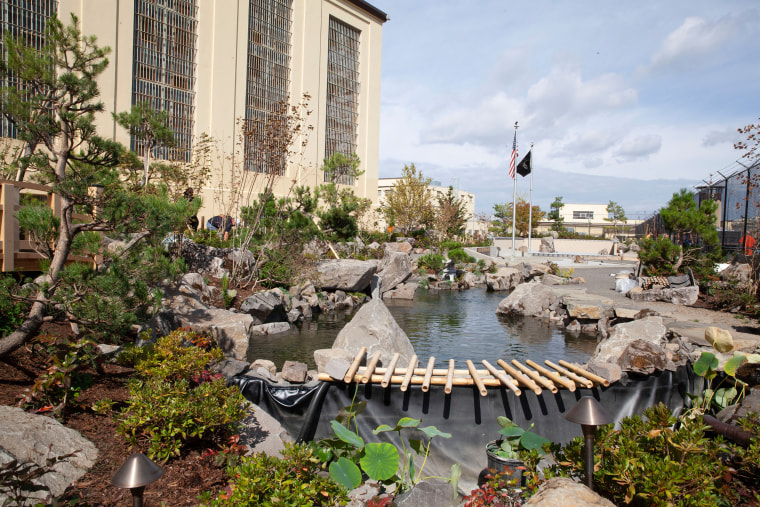
“Too oftentimes in a correctional setting, we operate to the 3 to 5 percent of why we shouldn’t do something, and never focus on the why we should,” Kelly said.
The Asian Pacific Family Club was told by the administration that if they wanted a garden, they would need to raise all the required funds necessary to build it themselves.
Taking on that challenge, club members raised close to $270,000 through grants and community fundraising, relying on outside partnerships with local churches, universities and organizations such as the National Korean American Service and Education Consortium. The club also received a commitment of more than $250,000 in in-kind donations, including a donation of mini-pine trees from a local tree farm in Oregon. Construction on the garden began in May, and the garden is now almost complete.
“It’s amazing to see the hard work and fruition of where we’re standing now,” Toshio Takanobu, president of the Asian Pacific Family Club, said.
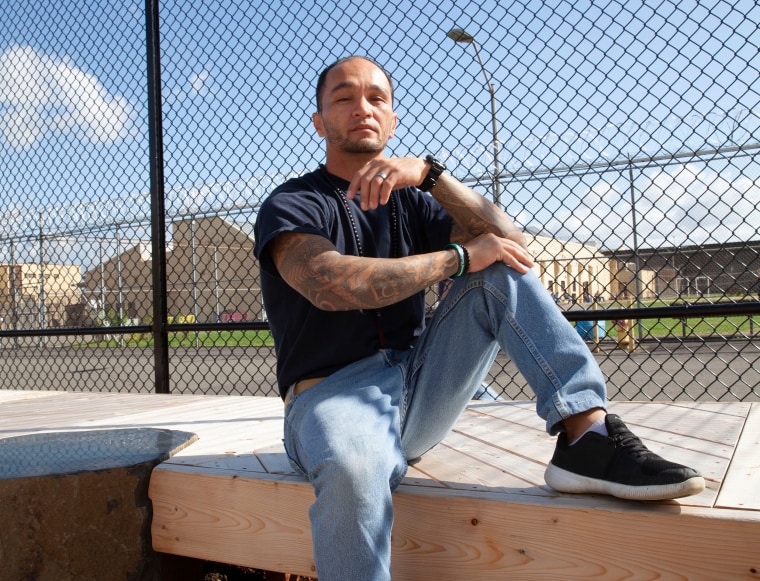
Takanobu, who is 12 years into a 26½-year prison sentence for robbery and manslaughter, said the healing effects of the garden can already be felt by those who have worked toward bringing the garden to life. He referenced the 181 adults in custody who have already volunteered their time in building the garden, and said many have lent their skills in construction or piping and others have done smaller tasks, such as pruning or raking.
“For those who are able to come out and be a part of this, the No. 1 thing they would describe is that they feel like they’re not in prison,” Takanobu said. “Pruning or watering or planting takes them out of that prison life.”
For the garden’s designer, Hoichi Kurisu, building the garden has been a healing process for everyone involved.
“Working with these guys, the people working together, their reaction is healing,” Kurisu said.
Kurisu, who has been building Japanese gardens for almost 50 years, believes a reconnection with nature can have a profound restorative effect on an individual’s mental and physical health.
Gardening as a form of therapy isn’t a new concept, and has been used in correctional facilities across the country. The New York City Department of Correction has long partnered with the Horticultural Society of New York to maintain a garden at Rikers Island, and the Insight Garden Program has been bringing gardening to correctional facilities such as San Quentin State Prison in California.
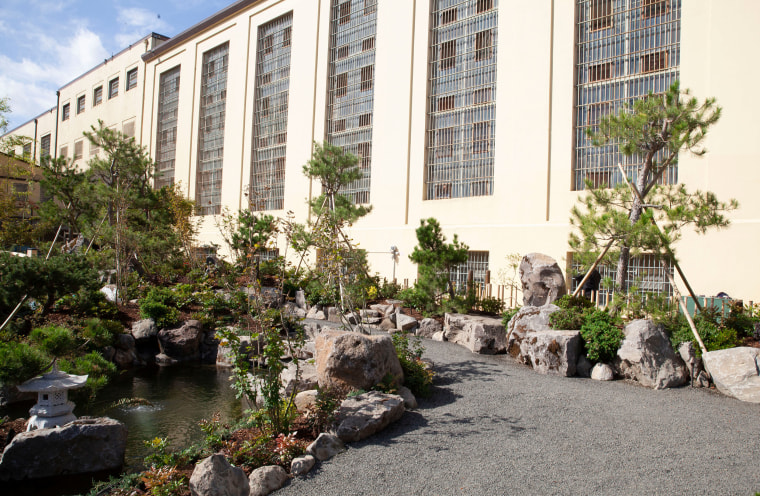
Advocates of such programs believe the community skills gained through gardening can make adults in custody better members of the community by emphasizing collaboration and teamwork through a reconnection to the natural world.
OSP’s garden is notable in its design as a Japanese healing garden, which incorporates different elements to guide a visitor intentionally through the space. Occupying approximately 16,151 square feet within the main yard at OSP, the garden is home to more than 30 trees and includes features such as a koi pond, a lotus pond, a waterfall, a wooden bridge, and a Zen-styled rock garden.
The garden is also located within view of the main pathway used daily by those incarcerated within the facility.
Advocates of the garden hope it can be used as a model to help reimagine how green spaces can be used in landscapes of correctional facilities across the country.
For Cofer, the five-year effort in bringing the garden to OSP has had the most impact on his life while in incarceration by giving him a renewed sense of purpose.
“There’s no Google maps to restoration and redemption, you have to forge your own way,” Cofer said. “I think that even though I may not be forgiven for the harms that I’ve caused, maybe some people will be impacted in a positive way as a result of my choices today and tomorrow.”
